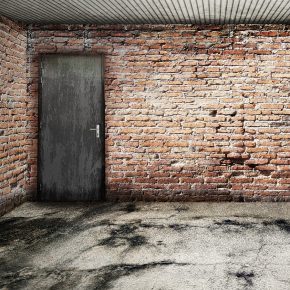
GUEST ARTICLE: The Countdown is On – Are You Ready for Part L Photographic Evidence Compliance?
The clock is ticking for many housebuilders. With the uplifted Part L of Building Regulation 40 binding as of June 15th 2022, many housebuilders bought themselves time to comply, by submitting building notices or full plans for development work ahead of that date. If work had commenced on those sites before 15th June 2023, those plots did not need to meet Part L requirements. Maria Hudson, Group CMO at Zutec, writes the following article…
“The June cut-off date is fast approaching, and any projects starting on-site after this point must meet the requirements set out by Part L. This includes mandatory photographic evidence of construction work done to demonstrate how each new homes will produce 31% less CO2 emissions compared to prior requirements. For housebuilders that haven’t got a solid Part L process in place across their sites now, the countdown is on.
As background, Part L was updated as an interim improvement in energy efficiency for individual dwellings being built. This is in readiness for upcoming regulations such as the more rigorous Future Homes and Future Building Standard in 2025.
Mandatory
The requirement to capture photographic evidence to comply with Part L 2021 is mandatory. Housebuilders and developers need to demonstrate new builds and refurbished dwellings are constructed using materials, methods and technology that meet building regulation standards. Failure to meet these criteria means SAP assessors cannot release EPCs (Energy Performance Certificates) and the new BREL Report (Building Regulation England Part L Report) for plot completion.

For sites where work starts after the 15th June 2023, an on-site audit of building details and thermal elements will be required during construction and at completion for building regulation approval. Photographic evidence should be taken prior to production of the EPC and BREL output compliance report. Digital and high-resolution photos must also be unique to each property and property detail, show date, time and location of each image, referencing the plot number so it is traceable. This provides proof the quality and installation of each plot is in accordance with best practice, and truly reflects that of the design stage SAP calculation and assumed performance.
Part L requires all photos to be taken at appropriate stages of construction when each detail is completed and before closing works. To neglect or omit these requirements can be costly and timely to the housebuilder or developer and may mean work has to be deconstructed and retrofitted. Non-compliance with the BREL report, which is required by the building control body for final work sign off, also means a property can’t be ‘completed’.
So, what can be done to get ahead of the game and June 15th deadline and make the process of evidence capture more efficient and effective?
An out-of-the-box application is a savvy investment, as they can be up and running in days making life on site easier for housebuilders that are yet to fix their Part L process. Seamlessly integrating into existing site tools means it can be part of one quality management programme. It should also enable users to take geo-referenced and timestamped photos from any device with or without a data connection.
Data can then be collected and stored throughout the build stage, without the need to be in the office, and submitted to assessors for feedback or sign-off.
Photos can be complemented with supporting documentation, stored centrally within the platform and traced back to a location and property so assessors know they’re related to the plot being inspected.
Once the SAP assessor has reviewed evidence it can be approved or sent back with feedback, so if work is not up to standard it can be remediated before the build completes – speeding up the process massively.
These platforms are completely configurable so they can be tailored to business needs, providing an efficient and effective way to evidence compliance. This is relevant to Part L as well as other upcoming building regulations.
By moving to a dedicated Part L solution now, you can be ready for June 2023 and take your first steps towards a single source of truth of building information to demonstrate products and materials are used to build energy-efficient and safe homes.”
Latest news

17th April 2025
Nuaire shares expertise at Specifi Mechanical Services events in 2025
Indoor air quality and ventilation manufacturing specialist Nuaire is pleased to be exhibiting at the Specifi Mechanical Services events once again in 2025.
Posted in Air Conditioning, Articles, Building Industry Events, Building Industry News, Building Products & Structures, Building Services, Exhibitions and Conferences, Facility Management & Building Services, Heating, Ventilation and Air Conditioning - HVAC, Restoration & Refurbishment, Retrofit & Renovation
15th April 2025
West Fraser: CaberDek earns top marks from Home Counties carpentry specialist
A specialist carpentry sub-contractor covering housing sites across a large swathe of the Home Counties has come to value CaberDek from the West Fraser range for a variety of reasons: not least because the high quality panel product doesn’t destroy his operatives’ electric saws!
Posted in Articles, Building Industry News, Building Products & Structures, Building Systems, Case Studies, Restoration & Refurbishment, Retrofit & Renovation, Roofs, Timber Buildings and Timber Products, Wooden products
15th April 2025
GEZE: The Role of Access Control Systems in Enhancing Building Safety
Jane Elvins, Specification and Business Development Manager at GEZE UK, delves into the role of access control systems in enhancing building safety…
Posted in Access Control & Door Entry Systems, Architectural Ironmongery, Articles, Building Industry News, Building Products & Structures, Building Services, Doors, Facility Management & Building Services, Health & Safety, Restoration & Refurbishment, Retrofit & Renovation, Security and Fire Protection
11th April 2025
Don’t Do a Dave! It’s Time to Lock FIT Show 2025 in Your Calendar!
It’s that time again – FIT Show is back! You could be forgiven for thinking there won’t be much new to see when FIT Show returns to the NEC from 29 April – 1 May. Wrong!
Posted in Articles, Building Industry Events, Building Industry News, Building Products & Structures, Building Services, Continuing Professional Development (CPD's), Exhibitions and Conferences, Information Technology, Innovations & New Products, Restoration & Refurbishment, Retrofit & Renovation, Seminars, Training
 Sign up:
Sign up: